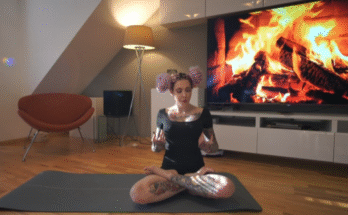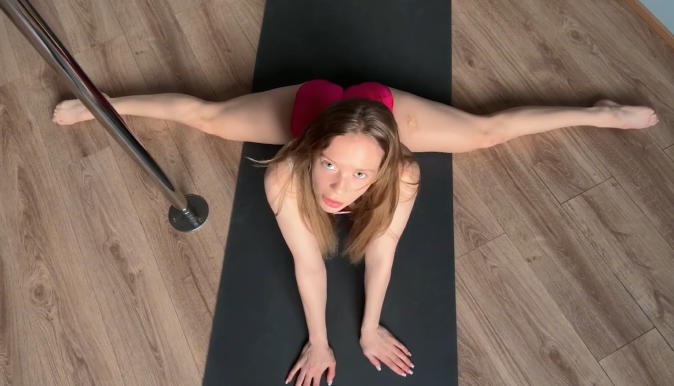
Flexibility is one of the most essential components of physical fitness, and it holds particular importance for women who want to achieve a balance of strength, grace, and mobility. In recent years, a growing number of women have been exploring a unique blend of yoga and gymnastics to enhance flexibility while building overall body awareness. Both yoga and gymnastics require discipline, focus, and consistency, and when combined, they create a powerful routine that improves not only flexibility but also balance, posture, and mental clarity.
The Importance of Flexibility for Women
Flexibility allows the body to move freely and efficiently, preventing stiffness and reducing the risk of injuries. For women, maintaining flexibility becomes even more vital as it helps with posture, supports healthy joints, and enhances performance in daily activities or athletic pursuits. Beyond the physical benefits, flexibility training is known to relieve tension and stress, which is crucial for mental well-being.
As women age, muscles and joints naturally lose some elasticity. Incorporating flexibility practices like yoga and gymnastics helps counteract this decline, ensuring the body remains agile and strong. Additionally, flexibility complements other forms of exercise such as running, weightlifting, or cycling by promoting recovery and preventing strain.
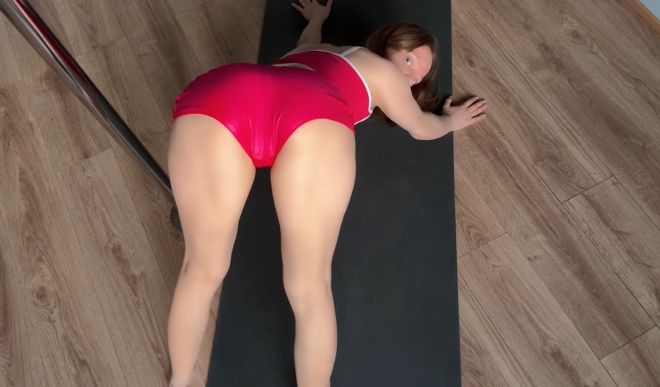
Yoga for Flexibility
Yoga has been practiced for centuries, and its benefits extend far beyond just physical movement. In terms of flexibility, yoga is unmatched due to its gentle, progressive approach to stretching and its focus on breath control.
Key Yoga Poses for Flexibility:
- Downward-Facing Dog (Adho Mukha Svanasana): A foundational pose that stretches the hamstrings, calves, and shoulders.
- Pigeon Pose (Eka Pada Rajakapotasana): Opens the hips, which are often tight from prolonged sitting.
- Forward Fold (Uttanasana): Stretches the entire back of the body, including the spine and hamstrings.
- Cobra Pose (Bhujangasana): Increases flexibility in the spine while strengthening the back.
- Bridge Pose (Setu Bandhasana): Opens the chest and shoulders while stretching the hip flexors.
Yoga encourages slow, mindful stretching, allowing muscles to relax deeply. The use of breathing techniques, or pranayama, enhances each stretch, helping the body release tension while improving oxygen flow to the muscles.
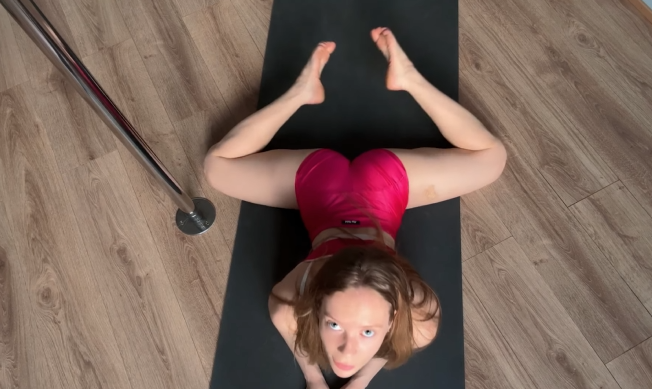
Gymnastics for Flexibility
Gymnastics, on the other hand, focuses on dynamic flexibility—stretching that is paired with movement and strength. It involves exercises that demand not just flexibility but also control, coordination, and power. For women looking to build long, lean muscles while improving their range of motion, gymnastics-inspired stretches and conditioning exercises are ideal.
Key Gymnastics Flexibility Drills:
- Splits Training: Front and side splits stretch the hamstrings, quads, and hips.
- Backbends: Moves like bridges and walkovers improve spine flexibility and strengthen the back and shoulders.
- Dynamic Kicks and Leg Swings: These increase hip mobility and prepare the legs for high kicks or jumps.
- Shoulder Flexibility Drills: Wall stretches, stick pass-throughs, and back-to-wall bridges build flexible, strong shoulders.
- Pike Stretch: Improves hamstring flexibility and is essential for gymnastics moves like handstands.
Gymnastics-based flexibility work requires more intensity and sometimes faster movements compared to yoga. It focuses on active stretching, which means holding positions while engaging the muscles rather than fully relaxing.
Combining Yoga and Gymnastics
When yoga and gymnastics are combined, the result is a complete flexibility program that addresses both static and dynamic stretching. Yoga helps lengthen the muscles while calming the mind, and gymnastics adds strength and functional mobility to the mix.
Benefits of Combining the Two:
- Improved Range of Motion: Yoga’s deep static stretches complement gymnastics’ active stretches, resulting in greater overall flexibility.
- Better Balance and Posture: Both practices strengthen the core and stabilize muscles that support proper alignment.
- Enhanced Mental Focus: Yoga’s meditative elements help calm the mind, which improves concentration for challenging gymnastics drills.
- Injury Prevention: The balanced approach ensures muscles are both flexible and strong, reducing the likelihood of over-stretching or strain.
- Graceful Movement: Women who train with yoga and gymnastics often move with fluidity and confidence, whether in sports, dance, or daily activities.
A typical routine could begin with 10 minutes of yoga-based warm-up stretches, followed by 20 minutes of dynamic gymnastics flexibility drills, and end with 10 minutes of yoga cool-down and relaxation poses.
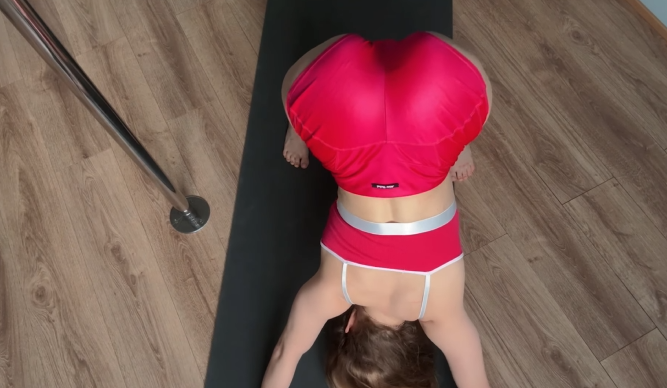
Sample Flexibility Routine
Here is an example of a 40-minute yoga-gymnastics flexibility session designed for women:
- Warm-Up (5 minutes): Start with deep breathing, cat-cow stretches, and light shoulder rolls to loosen the body.
- Yoga Flow (10 minutes): Move through poses like Downward Dog, Warrior I and II, Triangle Pose, and Pigeon Pose, holding each for 30-60 seconds.
- Gymnastics Stretching (20 minutes):
- Front split practice (3 sets, hold each leg for 30-60 seconds).
- Side split holds (3 sets of 30 seconds).
- Backbend or bridge pose (3 sets of 20 seconds).
- Dynamic leg swings (10 per leg).
- Shoulder stretches using a stick or wall.
- Cool-Down (5 minutes): Finish with Child’s Pose, seated forward fold, and a few minutes of Savasana (relaxation).

Tips for Success
- Consistency is Key: Flexibility takes time. Practicing 3-5 times a week will yield noticeable results within a few months.
- Warm Up First: Always warm up your muscles before deep stretches to prevent injuries.
- Listen to Your Body: Never force a stretch. Pain is a signal to stop and adjust your form.
- Use Props: Yoga blocks, straps, or a resistance band can help achieve proper alignment and deepen stretches safely.
- Focus on Breathing: Breathing deeply during stretches helps relax the muscles and makes the process more effective.
The Mental Connection
One of the most beautiful aspects of blending yoga and gymnastics is the connection between mind and body. Yoga encourages mindfulness, which can enhance your performance in gymnastics drills by improving focus and patience. The meditative side of yoga also helps women build confidence and reduces stress, making each flexibility session not just a workout but a form of self-care.
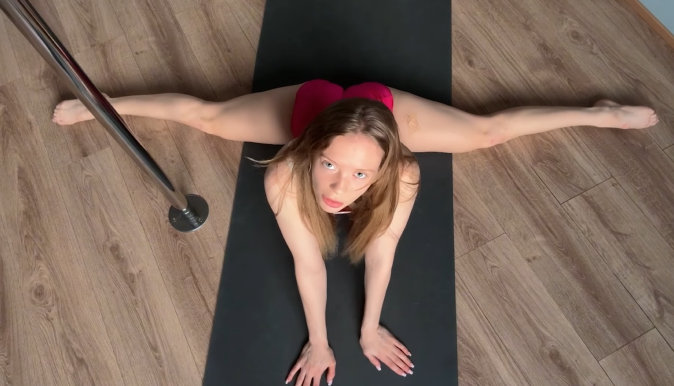
Conclusion
Women’s flexibility training has evolved beyond simple stretching routines. By combining the ancient wisdom of yoga with the athletic precision of gymnastics, women can create a powerful, well-rounded approach to flexibility. This hybrid method not only lengthens and strengthens muscles but also enhances mental clarity, balance, and overall health. Whether you are a beginner or an experienced athlete, incorporating both yoga and gymnastics into your routine can transform the way your body feels and moves, giving you both strength and grace.

